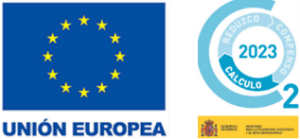Today we share with you a new case of success executed by J. Huesa for the purification of industrial
wastewater of our client, a leading biotechnology company dedicated to the agro-food sector offering
alternatives and natural solutions.
During the manufacture of its products, our client generates wastewater that it wants to treat and reuse
within its production process, to continue the path of sustainable development thanks to an environmental policy focused on zero discharge.
Wastewater piloting at laboratory and semi-industrial scale
Once the technical requirements of our client were known, the J. Huesa technical team opted for
biological treatment using MBR membranes with external membranes and a final refining stage with
reverse osmosis, as a solution for reusing the water.
To corroborate the suitability of the chosen treatment, in an initial stage of the project, a pilot test was
carried out based on the proposed treatment line to verify the validity of the design data and the
behaviour of the technological solution for the nature of this wastewater.
The duration of this pilot run was extended over several months, treating a total of 12 batches of different types of feed, to achieve a minimum representativeness for biological treatment, and to identify design criteria, as well as to determine and test the necessary pre- and post-treatments.
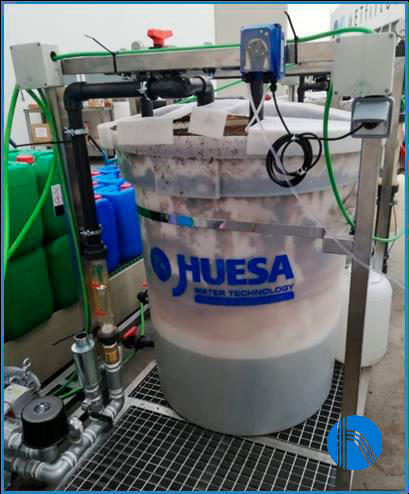
MBR external membrane reactor
Characterization of the effluent and plant design parameters
Once the pilot project had been carried out, the following conclusions could be drawn:
- We found biodegradable discharges, which confirm that MBR is the appropriate treatment for
purifying water. - Reverse osmosis is positioned as a technology capable of meeting the internal requirements of
our client, which needs to adapt the quality of its wastewater to reuse it in its production process. - Considering the scale of the project and the requirements of the water for its reuse, it was
proposed to the client that the second step of reverse osmosis should not be included from the
beginning to assess the performance of the proposed solution in terms of the main parameters
that it must meet.
Adopted solution
J. Huesa has designed a solution based on the technical objectives of the client and the general
objectives of the project, which includes a water purification and reuse line, consisting of an MBR with
external ultrafiltration membranes with a sludge line, followed by a reverse osmosis line for reuse within the production process.
It should be noted that the water treatment plant has been designed with everything necessary to be
able to expand in the event of an increase in our client’s production and even if there is a variability in
the discharge.
Pretreatment
The wastewater from the production process flows into the treatment plant and converges in a pumping well.
As the raw water is unbalanced, the homogenization of the characteristics, both in capacity and load, is
a key factor for the correct functioning of the treatment design. For this reason, the water is conveyed
from the sieve to the homogenization basin, which is equipped with an agitator whose function is to
keep the contents of the basin permanently homogenized, so that when the effluent is transferred to the biological reactor, the effluent will have the most homogeneous characteristics possible.
MBR (Membrane Biological Reactor) with external membranes
The effluent requires a drastic removal of the organic load to be treated by reverse osmosis. The most
economical and efficient alternative is a biological treatment.
In this case, a biological treatment with membrane clarification (MBR) has been selected, since the
water is ultrafiltered and therefore optimally suited for subsequent reverse osmosis treatment.
Given the great variability in the nature of the discharges, external tubular clarification membranes have
been selected. The membranes selected are ultrafiltration membranes.
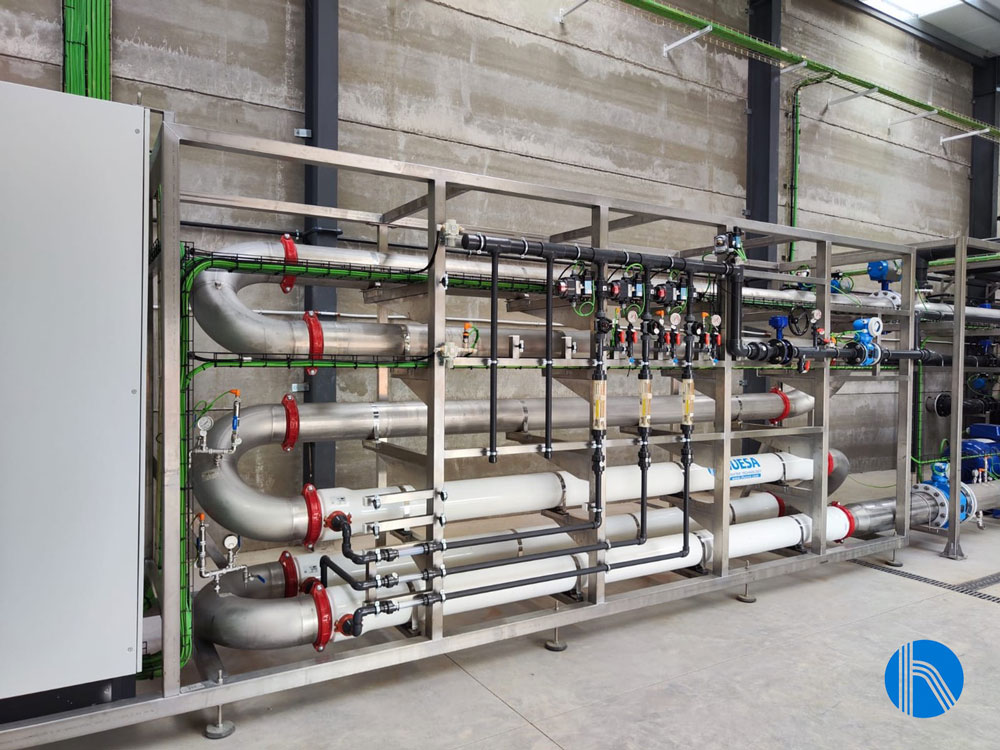
MBR´s external membranes
Sludge treatment
Inside the reactor a series of sludge is also formed, which must be removed and treated. For this reason, one of the lower outlets of the reactor leads to a sludge treatment line by means of a dewatering screw.This sludge operation is programmed in the automaton in such a way that it will be in operation during
the programmed hours and whenever necessary (parameters to be defined by the plant personnel).
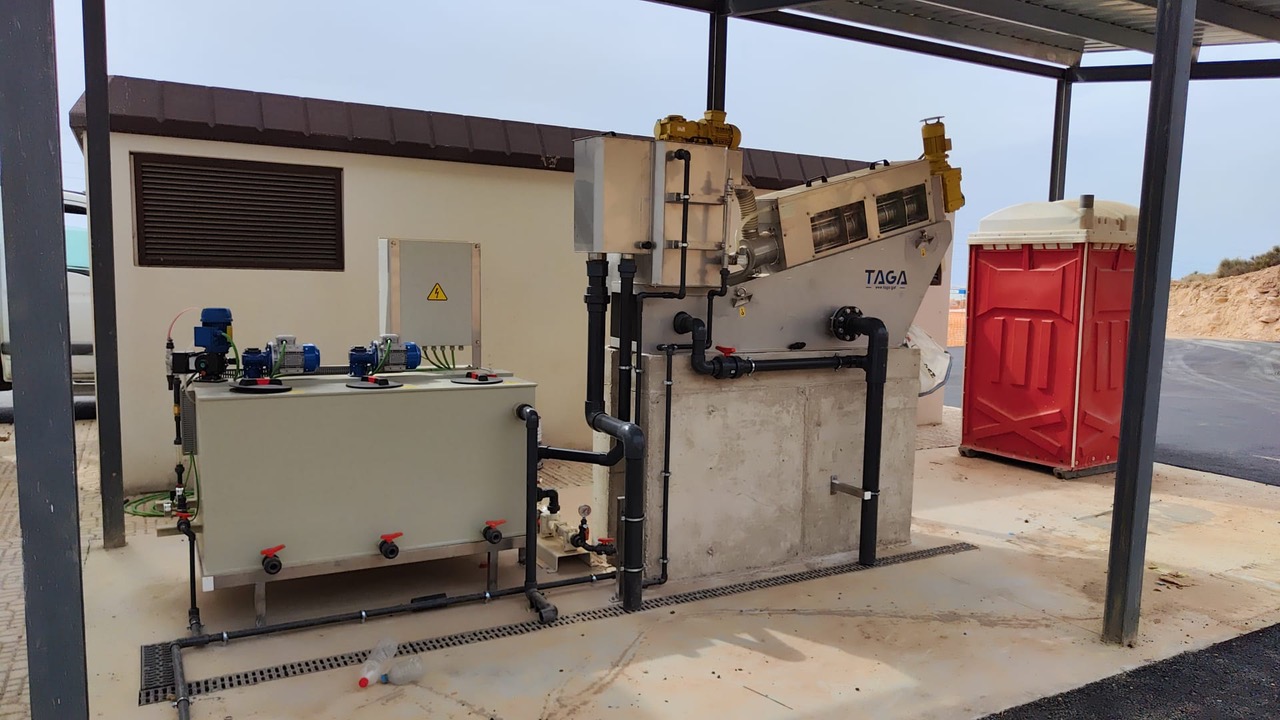
Sludge treatmnet overview
Water reuse by Reverse Osmosis
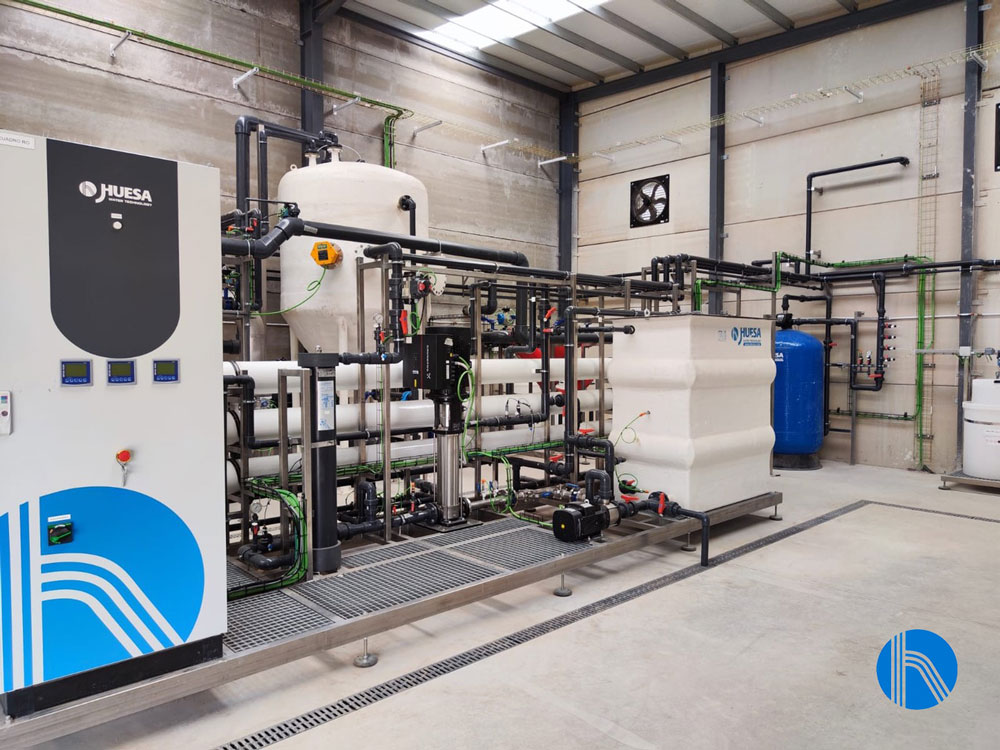
When the permeate is extracted from the biological reactor by the ultrafiltration unit, it is led to an
ultrafiltered water accumulation tank.
From there the water is pumped to the reverse osmosis plant, which is preceded by a GRP activated carbon filter.
A chemical cleaning or CIP system is installed, which is produced semi-automatically when required by
the customer depending on the production requirements.
The permeated water is stored in a tank made of GRP, closed at the top, with a flat bottom from which
our client will take the water to be incorporated into their production process.
Instrumentation and control
Both the treatment plant and the reverse osmosis plant are equipped with instrumentation and control
elements that communicate with the programmable logic controller included in the control and
command panels.
The panels also include a touch screen for the operation and configuration of the plant. The J. Huesa
Instrumentation and Control team has designed the control panel so that it can be integrated into the
customer’s SCADA system. It also includes a remote control system.
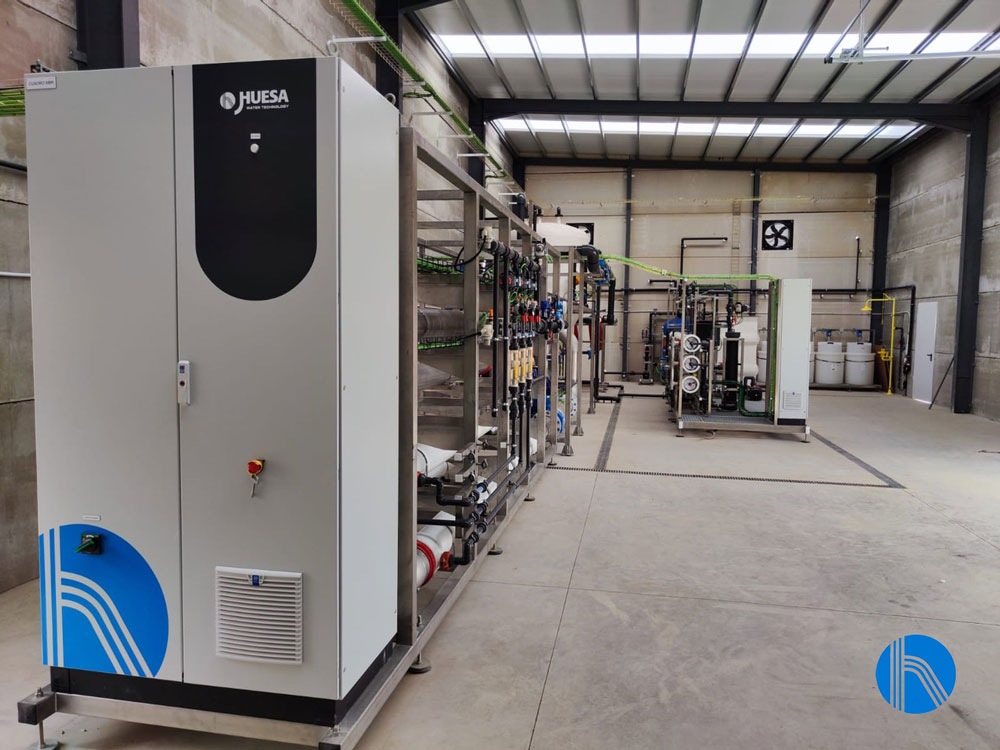
Wastewater’s CE


